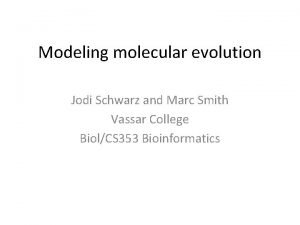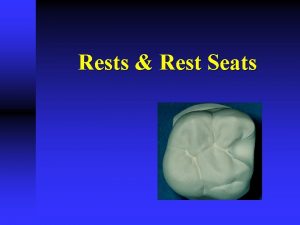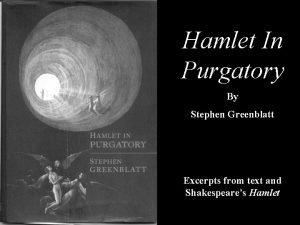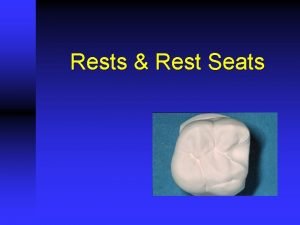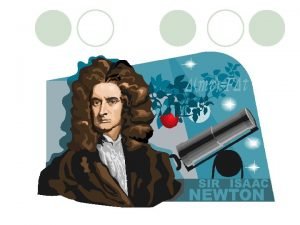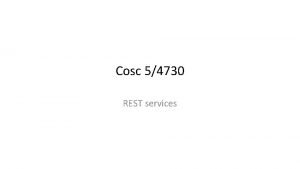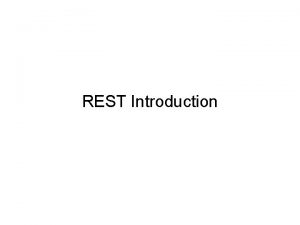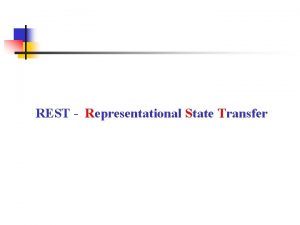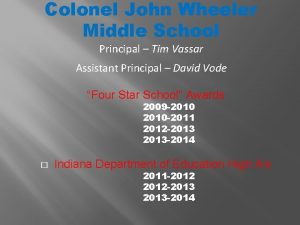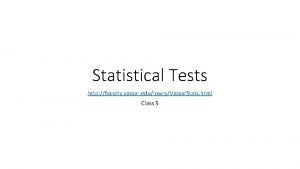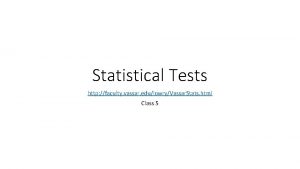Plan for the rest of the Semester Vassar








- Slides: 8

Plan for the rest of the Semester Vassar College Modern Physics Laboratory Eric Myers Department of Physics and Astronomy Vassar College Spring 2005 Vassar College Modern Physics Laboratory

End Game • April 12 – Meet in Physics 209 at 5: 00 PM to discuss: Ø Experiment #5 Ø Presentations: Power. Point/Keynote/Overheads Ø Te. X/La. Te. X/REVTe. X • April 14 -26 – Experiment #5 (two weeks) • April 28 – Meet in Physics 209 to discuss: Ø Lab reports: Te. X help, suggestions, etc… Ø Presentations: Power. Point, suggestions, etc… Ø Course evaluations • April 29 – Title, Abstract, and type of presentation are due Ø Lab Report #5 due by 5: 00 PM, in REVTe. X • May 3 – Presentations 3: 00 -6: 00 PM in Physics 209 Ø Lab Notebooks due Spring 2005 Vassar College Modern Physics Laboratory 2

Modern Lab Experiments I II Muon Lifetime Speed of Rays Michelson Interferometer Electron Charge (Oil Drop) Photoelectric Effect Acousto-Optic effect Holography Black Body Radiation He. Ne Laser Assembly Atomic Spectroscopy Electron Diffraction Cavendish Gravity Expt. Cosmic Rays II Spring 2005 III/IV Nuclear Spin Resonance Electron Spin Resonance Fiber Optics Signaling Fourier Transform Spectr. Compton Scattering Franck-Hertz Expt. Black Body II Hyperfine Structure of Rb Langmuir Probe CO 2 Laser Mossbauer Effect Sonoluminesence Zeeman Effect Vassar College Modern Physics Laboratory 3

Experiment #5 You request your first, second and third choice, and I will assign experiments based on your preferences and mine. You can do an experiment from Column I, or you can do one of the selected experiments from Columns II or III: You can switch lab partners. 1. Electron Diffraction – Verify de Broglie’s hypothesis that particles have a wavelength, and observe and measure diffraction of electrons from aluminum and carbon crystals. 2. Cavendish Gravity Expt. – Reproduce Cavendish's famous experiment to determine Newton's constant of gravitation to highest precision possible. Determine theoretical precision of apparatus. Spring 2005 Vassar College Modern Physics Laboratory 4

Experiment #5 3. Atomic Spectroscopy – Perform several spectroscopic experiments of increasing precision and difficulty: 1. 2. 3. 4. 5. 6. Calibration against Hydrogen. Measurement of Na, Ne, Hg spectra. Test resolution of Na & Hg doublets. Try to identify "mystery mixture" based only on spectral signatures. Try to observe splitting of Hydrogen/Deuterium mixture. Determine theoretical precision of apparatus, perhaps design better… 4. Cosmic Rays II – Sample the energy spectrum of ambient cosmic rays. Callibrate the PMT, scintilator, and discriminators. Set up additional “veto” triggers. 5. Electron/Nucleon Spin Resonance – Use radio frequency signals to find the "spin flip" frequency of a sample. apparatus to work!) Spring 2005 Vassar College Modern Physics Laboratory (Get the 5

Experiment #5 6. Fiber Optical Signalling – Measure the speed of optical signals along a fiber optic cable. Set up a configuration to transmit a signal to another part of the building over fiber optic cable. 7. Fourier Transform Spectroscopy – Linear superposition of Red and Green lasers produces optical "beats" from which the unknown wavelength of the "Gree. Ne" can be determined. Spring 2005 Vassar College Modern Physics Laboratory 6

Student Presentations • Science is about obtaining new research results and about communicating those results to others! • Each student makes a 5 minute presentation on some topic of interest from one of the experiments, as you might do at a scientific conference. • Possible Topics: Ø A derivation Ø A problem solved Ø An overview of a 5 th Experiment…. • Format may be one of Ø Power. Point (Templates on web) Ø Keynote Ø Overhead Transparencies (easiest!) • Allow 2 minutes for questions • Title and Abstract are due the Friday before the talk Spring 2005 Vassar College Modern Physics Laboratory 7

Power. Pointers • Editing works just like MS Word • Equations can be imported from Equation Editor • Overall design can be controlled and changed via: Ø Slide Master: q Background q Headers and Footers q Default Fonts q Levels and Indentation o But don't get carried away » Smaller fonts are harder to read! Ø Title Master – same idea for just the title slide • Design Template can be loaded later and applied as needed. For this class get "Modern. Lab" template. Spring 2005 Vassar College Modern Physics Laboratory 8
